
As a result of climate change, sudden cloudbursts of heavy rain in Sweden are expected to become more common and more intensive. Good practice in the management of water increases towns’ ability to cope with cloudbursts, thereby reducing the risk of major damage.
AgricultureHealthHeat waves
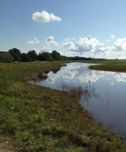
Getinge in Halmstad Municipality has repeatedly been struck by flooding of the Suseån River. To protect the community, preserve natural assets and improve the quality of life of the residents, the municipality built flood banks and a combined wetland and recreation area.
AgricultureErosionFloodingHealthHeat waves
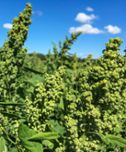
Longer periods of drought and higher temperatures await Sweden in a changed climate. The South American crop quinoa is suited to dry conditions and with a new cultivated variety, it can also be grown in Sweden. It is being tested by farmers in Östergötland.
AgricultureBiodiversityEcosystem servicesErosionFlooding
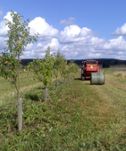
Alley cropping means that fruit and nut trees and berry bushes are planted in rows on the field. This is being tried at the farm Hånsta Östgärde in Uppland. The method is considered to be more resilient at the same time that the risks are spread over more crops.
AgricultureEcosystem servicesErosionFloodingMouldNatural environment

No-till farming is being tested on farms throughout Sweden, including two farms in Skåne. The method benefits microorganisms that work the soil at the same time that it counters erosion and other consequences of a changed climate.
BiodiversityEcosystem servicesErosionFloodingForestryMouldNatural environment
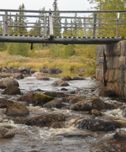
The natural habitats in many rivers have disappeared as a result of them being cleared and dams being built. Restoration of rivers to their natural brook environment among other things reduces the risk of flooding and benefits biodiversity.
BiodiversityEcosystem servicesFloodingForestry

Local natural forests are the role model in the forestry method the Lübeck model. This forestry method is one example of a method that provides conditions to face the changes that a warmer climate entails.
ErosionFloodingTourismUrban planning
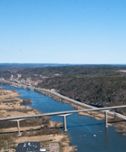
When a new road and railway were being planned in the Göta River valley, the infrastructure was raised to reduce the flooding risk. In raising the infrastructure, future sea levels, future subsidence of the ground and land uplift were taken into account. The project was the first large …
ErosionFloodingSnowStorm waterTourismUrban planning
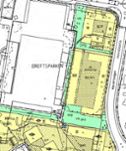
Climate change means that urban environment need to handle larger amounts of storm water run-off. At the same time, urbanisation decreases the share of green spaces which has good infiltration possibilities. Norrköping has therefore Interest built retention solutions to back up …
BiodiversityEcosystem servicesMouldNatural environment
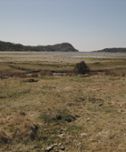
The County Administrative Board of Västra Götaland is working to climate adapt protection and care of natural areas. A template with proposals on climate-adapted measures in the care of nature reserves was developed.